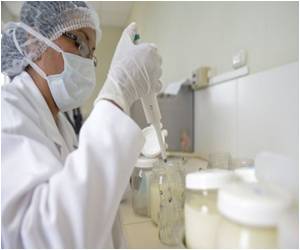
Prion diseases include Creuzfeldt-Jakob disease and fatal familial insomnia. Unlike other transmissible diseases, the infectious agent is not a virus or bacteria, but an abnormally shaped prion protein. Scientists believe it self-replicates by binding to normal prion proteins and forcing them to change shape to become an abnormal, and thus diseased, protein.
"Once heretical, the notion that proteins alone can act as self-propagating infectious agent is now becoming accepted as a new paradigm in biology and medicine. However, the mechanism by which prion protein changes its shape remains largely unknown and highly controversial, hindering efforts to develop drugs for prion diseases," said Witold Surewicz, PhD, professor of physiology and biophysics and senior author of the study. "A heated debate continues as to which part of the prion protein undergoes the change and what is the three-dimensional structure of the infectious form of the protein."
The researchers generated a variant of prion protein designed to stabilize the normal shape of one specific part of the protein. They accomplished this goal by replacing just one out of more than 200 amino acid residues, the building blocks of the protein. In a series of experiments, the researchers found that the modified prion protein was highly resistant to changing its shape. In other words, this approach may be successful in blocking the coercive action of the abnormal prion protein.
The team then created transgenic mice that produced this "superstable" human prion protein and infected them with Creutzfeldt-Jakob disease prions. The mice did eventually develop symptoms, but the signs did not emerge for more than a year – in fact, it took about 400 days. In contrast, mice without the modified prion protein showed symptoms within 260 days.
"Our discovery that a tailor-made mutation in one specific region of prion protein can prevent it from changing shape to a disease-associated conformation helps resolve the ongoing major controversy in the field regarding the mechanism by which infectious prions self-replicate," said Qingzhong Kong, PhD, associate professor of pathology and first author on the paper.
Advertisement
Source-Eurekalert












